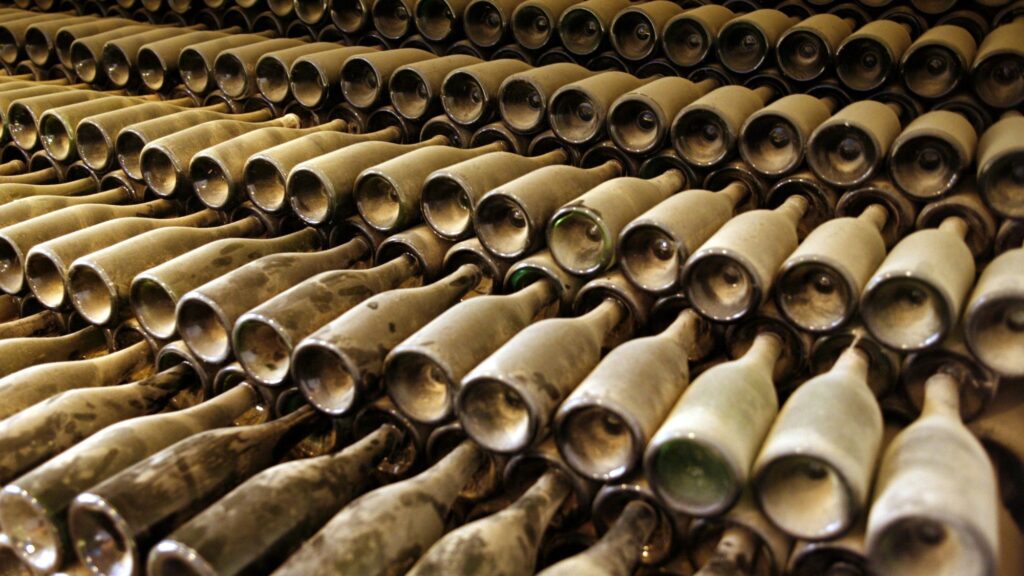The circumstances leading to the sinking of a French ship in 1840 while crossing the Baltic with a cargo of precious Champagne remain uncertain and are still under study. It appears that the exquisite wine was a gift from King Louis XVI to Tsar Peter the Great, who, however, waited for it in vain. In 2010, near the Åland Islands in Finland, the wreckage resurfaced, revealing 186 bottles found intact.

The 170 years spent under the sea do not seem to have affected the quality of the wine, according to results published in the Proceedings of the National Academy of Sciences (PNAS), which ensure that darkness and constant temperature have preserved its organoleptic qualities.
As a consequence, this extraordinary discovery, sparked the spread of underwater wine aging.
Content:
The Pioneers of Uunderwater Wine Aging
Some trace the relationship between wine and the sea back to ancient Greece when the inhabitants of the island of Chios used to rinse grapes with seawater to remove the bloom from the clusters, speeding up the withering process. However, here we are talking about something different: a method that involves the wine after production, namely aging.
The true pioneers of underwater aging can be found at the Italian winery Bisson, which since 2009 has developed its own aging technique, becoming a reference point in the production of Underwater Wine.
Inspired by the numerous findings of ancient wine amphorae in the Mediterranean, in 2009, Bisson submerged the first 6,500 bottles of Metodo Classico off the coast of Portofino, at a depth of 60 meters, where the water maintains a constant temperature of 15°C.
The bet was won, and the path to underwater aging was now open.
Why Choose Underwater Wine Aging
Marine depths provide a valid alternative to cellars for wine aging. Leaving wine underwater for a few months is equivalent to aging it for years on dry land.
The sea allows for a constant pressure on the bottles (seven atmospheres, equivalent to the internal pressure of a bottle of Metodo Classico) and leads the wine to compresses in the sea and releases its organoleptic qualities more forcefully once uncorked.
Furthermore, the total darkness and low temperature (always around 15°C) are nearly impossible to maintain in the same way in a traditional cellar. Finally, the gentle swaying of the currents prevents the sedimentation of residual yeast.

Underwater aging today
Today, several Italian companies use this technique. For example, In Emilia-Romagna, Sangiovese and Albana are aged off the coast of Ravenna, while underwater Vermentino can only be found in Sardinia, along the shores of Alghero.
Likewise, in Europe, (Spain, Greece, and Croatia in particular) many renowned producers have also embraced underwater wine aging.
Underwater aging is a growing sector that can represent a very interesting business niche for brave producers who love experimentation.










